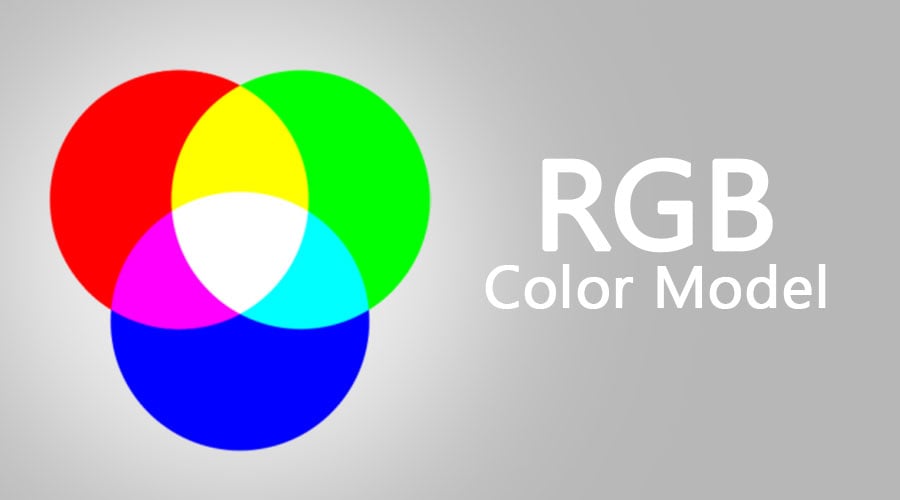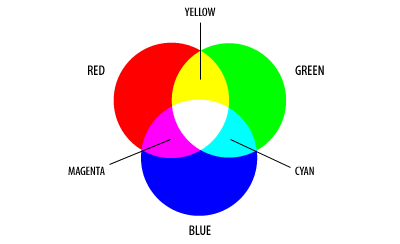Updated June 2, 2023
What is RGB Color Model?
RGB color model is an additive color model in which red, green, and blue colors are mixed in various proportions to form a different array of colors. The name was given with the first letters of three primary colors red, green, and blue. In this model, colors are prepared by adding components, with white having all colors in it and black without the presence of any color. It is used in various digital displays like TV and video displays, Computer displays, digital cameras, and other light-based display devices.
Understanding RGB Color Model
A color model is a process for creating more colors using a few primary colors. There are two types of color models: the Additive color model and the subtractive color model. In the additive color, model light is used to display colors. While in the subtractive color model, printing inks are used to produce color. The most common additive color model used is an RGB color model, and a CMYK color model is used for printing.
RGB color model is the additive color model using Red, green, and blue colors. The main use of the RGB color model is for displaying images on electronic devices. In the RGB color model, overlaying the three colors with the least intensity produces the color black, while adding them with full light intensity creates the color white. To make a different array of colors, these primary colors should be superimposed in different intensities. According to some studies, the intensity of each primary colour can vary from 0 to 255, creating almost 16,777,216 colors.
Working
As we already discussed above, the basic principle behind the working of the RGB color model is additive color mixing. It is the process of mixing 3 primary colors, red, green, and blue, together in different proportions to make more different colors.
For each primary color, it is possible to take 256 different shades of that color. So by adding 256 shades of 3 primary colors, we can produce over 16 million different colors. Cone cells or photoreceptors are part of the human eye responsible for color perception. In the RGB color model, combining primary colors creates different colors that we perceive by simultaneously stimulating the different cone cells.
As shown in the figure above, adding red, green, and blue light will cause us to perceive different colors. For example, if we combine blue and green light in some proportions, it will form cyan. And if we combine red and green light, it results in yellow light.
Uses Of RGB Color Model
Below are some uses of RGB color, which are as follows:
1. RGB in Display
The main application of the RGB color model is to display digital images. Cathode ray tubes, LCDs, and LED displays, such as televisions, computer monitors, or large screens, utilize RGB technology. Three small and very close RGB light sources construct each display pixel. At a common viewing distance, these colors may not be individually distinguishable and instead appear as a single solid color.
Component video display signals also utilize RGB. It consists of three red, green, and blue signals carrying three separate pins or cables. The best quality signal that can be carried on the standard SCART connector is these video signals.
2. RGB In Cameras
Digital cameras for photography that use a CMOS or CCD image sensor mostly perform with some RGB color model. Current digital cameras have an RGB sensor that helps crucially evaluate light intensity. And this results in the optimum value of exposure in each image.
3. RGB In Scanner
An image scanner is a device that scans a physical document, converts it to digital form, and transfers it to the computer. There are different types of such scanners, most of which work based on the RGB color model. These scanners use a charge-coupled device or contact image sensor as the image sensor. Color scanners commonly read data as RGB values and then employ algorithms to process and convert them into other colors.
Advantages
- No transformations are required to display data on the screen.
- Many applications consider RGB as the base color space.
- It is a computationally practical system.
- Video displays make use of RGB technology, leveraging its additive property.
- It relates simply to CRT applications.
- This model is very easy to implement
Disadvantages
- RGB values are commonly not transferable between devices
- Not perceptually uniform.
- Not perfect for the identification of colors
- Difficult to determine specific color
- The difference between colors is not linear
Examples
Below is an example of the RGB model, which is as follows:
1. Photography
The early 1860s marked the initiation of experiments with RGB in color photography. And thus made, the process of combining three color-filtered separate takes. Most standard cameras capture the same RGB brands, so their images look almost exactly what our eyes see.
2. Computer graphics
RGB color model is one of the main color representation methods used in computer graphics. It has a color coordinate system with three primary colors.
3. Television
Developers achieved a significant milestone in 1928 by creating the world’s first television with RGB color transmission. The Colombia Broadcasting System initiated experiments on the RGB field sequential color system in 1940. CRT displays in the modern century utilize RGB shadow mask technology.
Conclusion
Scientists found three colors, Red, green and blue, which produce many other colors while mixing. They called these colors as primary colors. When combined, red and green produce yellow, blue and green produce cyan, and red and blue produce magenta. Later, developers transformed this technology into a color model known as the RGB color model.
The primary purpose of this color model is for the sensing, representation, and display of images in an electronic system. The evolution of the RGB color model creates a huge development in the digital field. Different electronic devices, such as TV, monitors, cameras, printers, etc., used it.
Recommended Articles
This has been a guide to RGB Color Model. Here we discussed some basic concepts, Definitions, advantages, and disadvantages of the uses of the RGB Color Model. You can also go through our other suggested articles to learn more –



